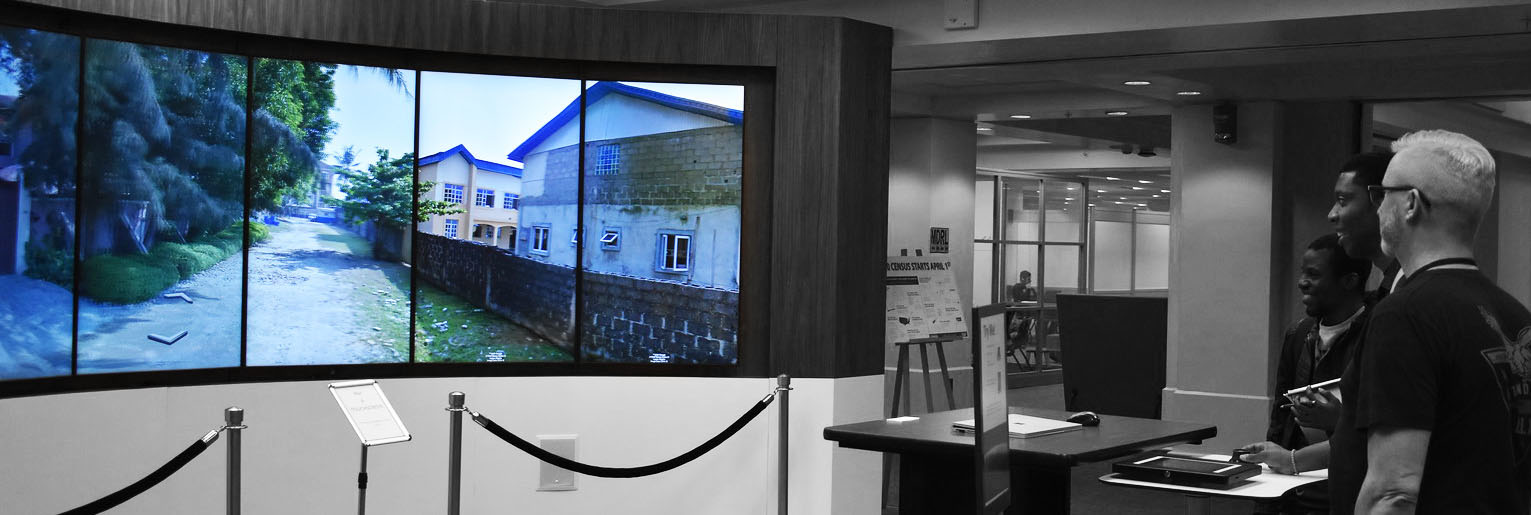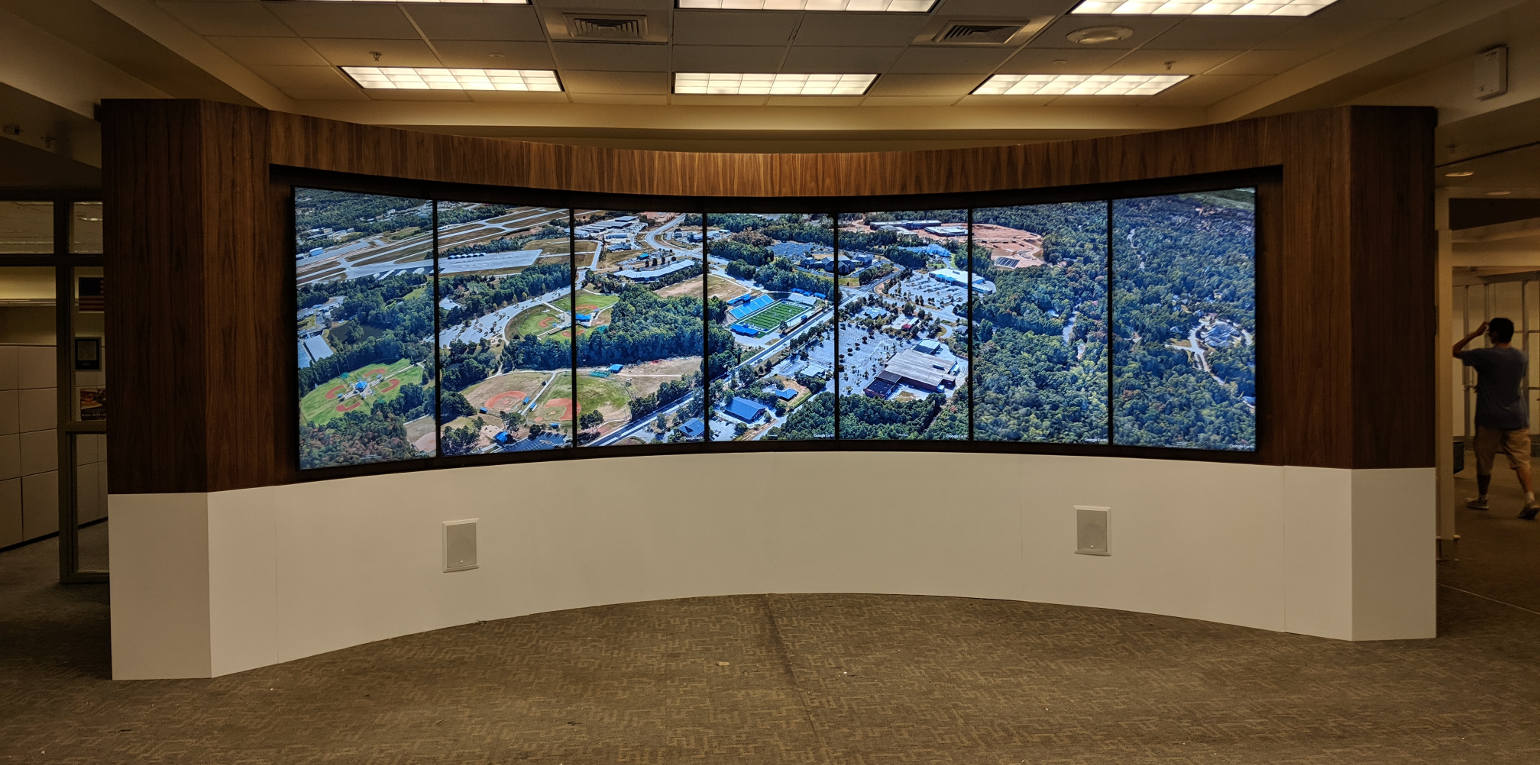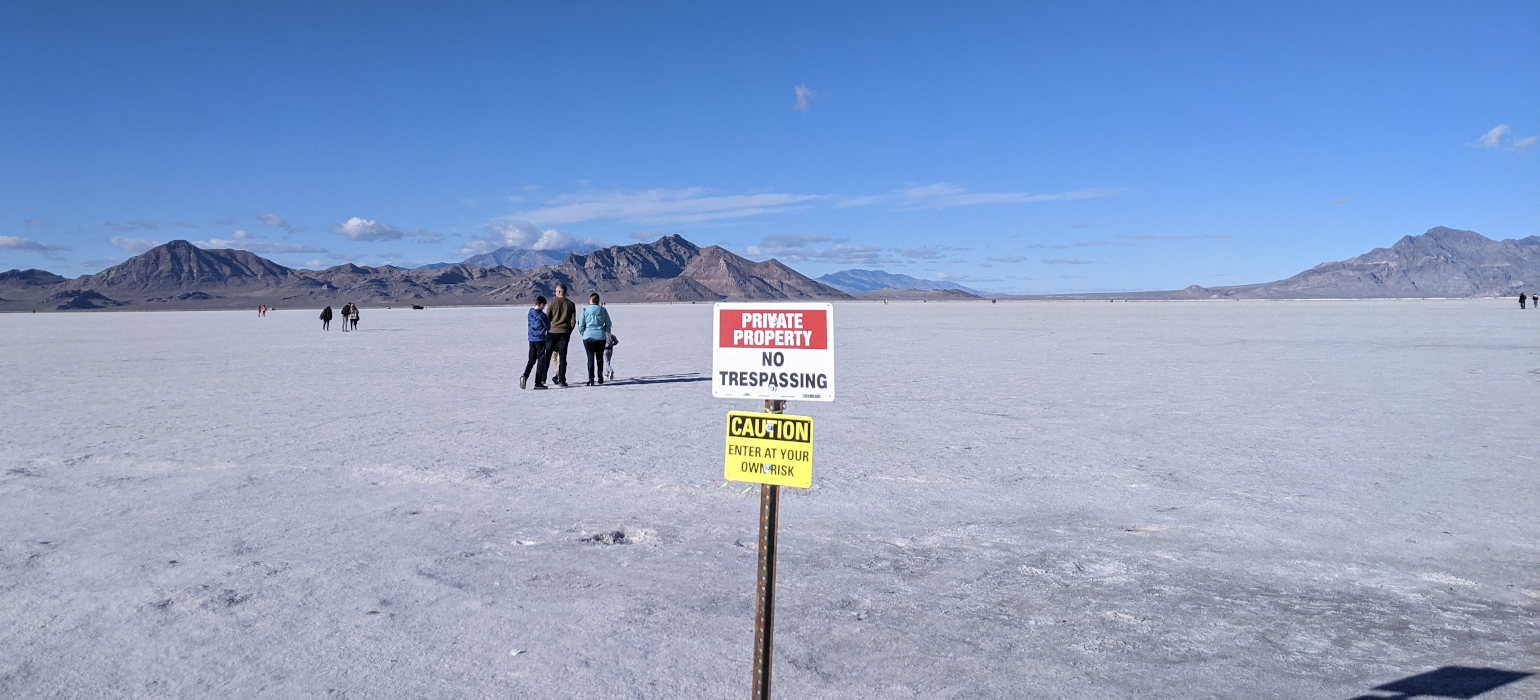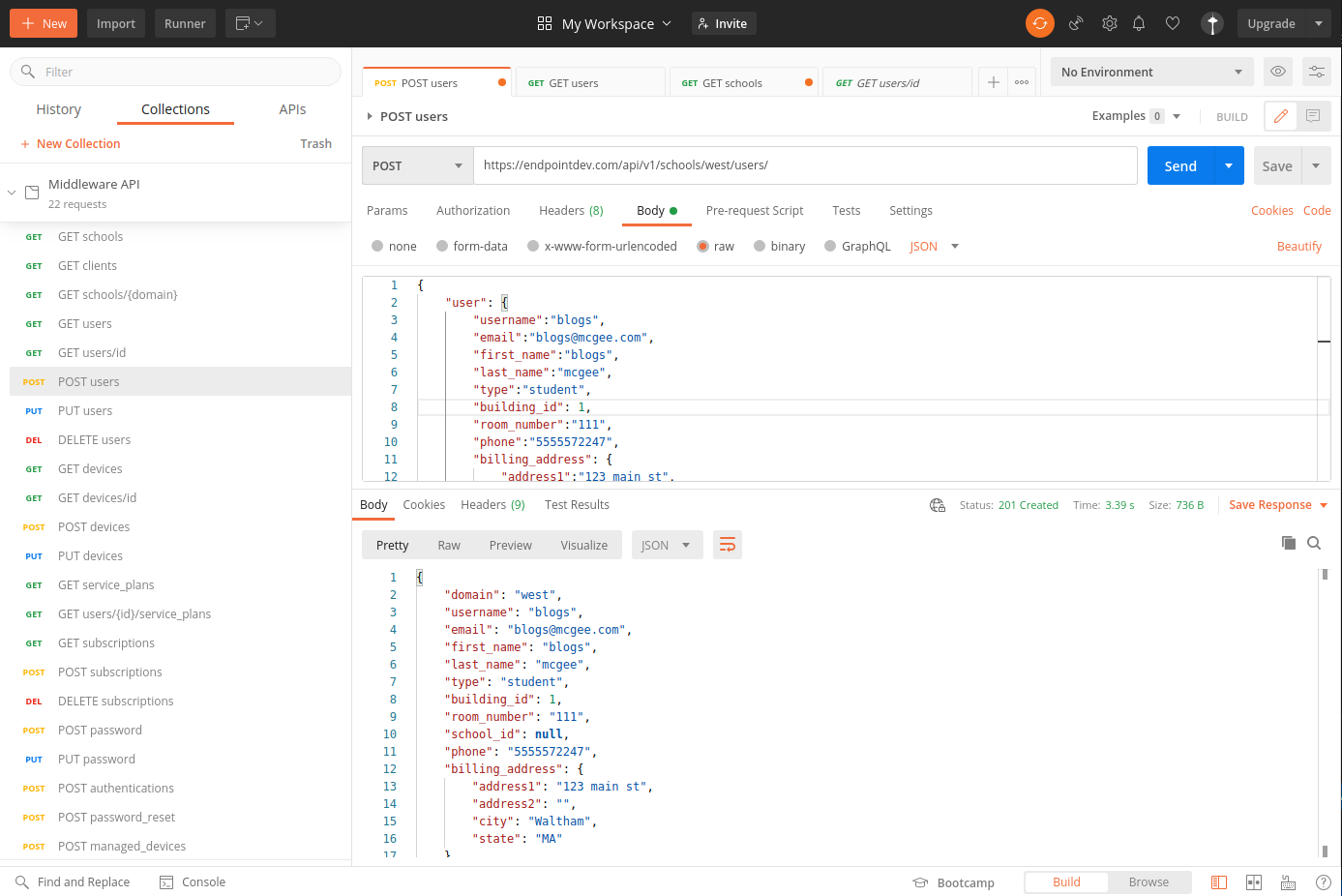VisionPort Success at Auburn University

Auburn University’s Liquid Galaxy/VisionPort installation was the first of its kind, built into a stunning wooden cabinet. A technological showpiece that is a highlight of Auburn’s campus, the VisionPort platform is used to showcase incredible imagery and presentations created by students and faculty alike.
Auburn’s Liquid Galaxy/VisionPort is located on the first floor of the RBD (Ralph Brown Draughon) Library. As stated on Auburn’s Library webpage, “It provides a one-of-a-kind platform for 3D geospatial visualization, panoramic images, video, tours, and more in a shared immersive environment. Auburn holds the distinction of being one of the few institutions in the Southeast to make this unique and innovative resource available to its patrons.”

Chris Mixon is Auburn University’s Information Technology Specialist in the Media & Digital Resource Lab. He works closely with University groups to develop content, and also works with End Point’s support team as needs arise. As Chris has shared, “we are doing great things with this platform!” Among other projects, Chris is working with instructors and students in Urban Design Studio (CPLN 7200) and Science Communication (ESSI …
visionport clients education
Remote Access Control with AWS Security Groups

With the onset of COVID-19, a lot of companies started remote work and had to allow their employees to access systems remotely while keeping unwanted traffic out.
As a company of almost all remote workers, even pre-pandemic, we have long had a solution for this. We have a web application that allows people to register their current IP address with one or more servers to gain access to staging sites, SSH, SFTP, databases, and other services that aren’t open to the public.
The application relies on host-based firewalls iptables (Linux) or pf (OpenBSD) to give people access to the system. For customers using cloud providers like AWS, we added support for this application to work with AWS Security Groups.
The Basics
The system uses a single web application and relies on the Apache mod_authn_file format and htpasswd command to create users and hashed passwords for the system. htpasswd allows you to create bcrypt, MD5, SHA-1, and Unix crypt passwords. We suggest using bcrypt wherever possible, since it is the only one in that list which is not fairly easily reversible nowadays.
The system also allows for grouping of users to allow them access to different sets of systems. These are …
cloud security networking
Using Postman to Test APIs

Postman is an easy-to-use tool that facilitates testing APIs. The GUI avoids the pain of old-school command-line tools and other time-consuming practices. Postman is helpful during development, for collaborating, and integral in automated testing.
It’s one of the most popular and longest-running API tools out there, so there’s a lot of documentation and community forums to provide whatever assistance is needed.

Use in development
The days of only manually testing APIs with curl are gone.
Instead we can use Postman to create reusable API calls. Postman will remember information such as the header configuration and data contained in the body. The API call can be sent from the GUI client, and it will display the response in a human-readable format.
Saved requests can be grouped in Collections. These can be imported and exported for collaborative use in a team.

Automated Testing
Full API testing can be done with the click of a button. Investing time now into building up the Postman infastructure will save development time down the line.
Custom Test Suites can be written in JavaScript and run manually or by a script. Periodically running these will ensure your …
testing api json
Installing Git 2 on CentOS 7

Git-ing a bit stale?
RHEL/CentOS 7 is starting to feel a somewhat dated, but it still has over 2½ years before it reaches the end of its support lifetime that Red Hat has set for the end of June 2024.
One component that is far enough outdated to cause serious annoyance is Git.
Git is by far the most-used version control system in the world. It popularized the distributed model of tracking changes to source code files and greatly simplified collaboration by multiple developers. It is open source and free software and is used by most public and many internal software projects, and also by solo developers. IDEs such as VS Code and IntelliJ idea integrate with it. SaaS code hosting providers GitHub, GitLab, Bitbucket, and others are built around it. We have been using and advocating Git since 2007 — see our blog posts about Git for a variety of helpful articles.
CentOS/RHEL 7 includes Git version 1.8.3, which was released in May 2013. There have been 2 major, 36 minor, and 216 patch releases of Git in the 8½ years between then and the current version 2.34.1!
The makers of CentOS/RHEL have good reasons to stick with versions they shipped with for the lifetime of the operating system: …
git sysadmin linux
Building responsive websites with Tailwind CSS

Tailwind CSS is a CSS framework, like Bootstrap, Bulma, and Foundation. However, Tailwind does things in a less conventional way when compared to traditional CSS frameworks. Instead of providing CSS classes based on components or functional roles (e.g. .card or .row), Tailwind only provides utility classes, in which each class does only one specific thing a CSS attribute usually does, such as m-4 for margin: 1rem or mt-8 for margin-top: 2rem.
In Bootstrap, one can simply apply the provided .card CSS class to have a <div> styled like a card the Bootstrap way. In Tailwind, the styles have to be constructed with a string of different atomic classes. E.g. the equivalent of a Bootstrap’s .card would be something like relative flex flex-col break-words bg-white bg-clip-border min-w-0 rounded border. Verbose, yes, but this gives flexibility for the developers to define the appearance of a .card element themselves (e.g. there could be multiple variants of appearances of a .card) without having to worry about overriding inherited/cascading CSS classes, which are typically the cause of many CSS bugs in production.
Atomic CSS
The first thing most notice when developing with …
css tailwindcss design
Building a search suggestions feature with Node.js and Vue
 Photo by Kasper Rasmussen on Unsplash
Photo by Kasper Rasmussen on Unsplash
The backstory
Some time ago, I worked on a project to improve the usability of a search component for our clients. Similar to Google and other search interfaces, the user was presented with a number of suggested search terms as they typed into the search box. We wanted to add keyboard support and give the component a visual facelift. When the customer used the up, down, Esc, or Enter or Return keys, the component would allow them to choose a particular search term, clear their search, or navigate to the results for their chosen search term.
This is what the new and improved UI looked like:

As developers, it can sometimes feel like we’re stuck when working on older, well established projects. We gaze longingly at newer and shinier tools. Part of my objective while building this feature was to prove the viability of a newer approach (Node.js and Vue) to the other engineers on the project as well as the client.
The feature existed already but we wanted to improve the UX and performance. Having added several Vue-powered features to this site in the past, I was very comfortable with the idea and have written about that previously. It would …
nodejs vue javascript development
Salesforce data migration: promoting data changes from a sandbox to production
 Photo by Dylan Wooters, 2021
Photo by Dylan Wooters, 2021
Intro
End Point recently completed a new e-commerce website built using Nuxt, Node.js, and Algolia and backed by Salesforce data. As part of the project, the client also wanted to re-categorize their products. They had already updated the data in a Salesforce sandbox and needed a way to move their changes to production in conjunction with the launch of the new website.
This data migration initially seemed like a simple request, but it ended up being one of the more challenging parts of the project. While there are clear instructions on how to migrate code changes from a sandbox to production (via change sets), there is very little information on how to migrate data.
Here I will outline the solution we developed, which involved writing a custom migration script using the JSForce library, testing using additional sandboxes, and planning for a rollback. This can serve as a blueprint for developers faced with the same task.
Why not use Data Loader to migrate?
The Salesforce Data Loader is a clunky yet reliable application that allows you to load large amounts of data directly into a Salesforce org. It will work to migrate data if the requirements are not …
salesforce typescript migration
From Liquid Galaxy to VisionPort

We are rebranding! Meet the future of Liquid Galaxy: VisionPort.
We are proud to announce the official launch of VisionPort, the next phase for Liquid Galaxy. We have spent the past six months taking steps to rebrand, expand, and reposition our product to combine modern working necessities with the traditional kiosk-style, shared immersive experience familiar to our clients. Through these efforts have come a robust product encompassing an entire room of enhanced features, screens, and conference-enabling applications.
While our core product will remain consistent with what our clients know and love, current and future clients can look forward to significant updates to the content management system and user experience. We are also proud to announce advanced add-on features that will allow our current and future clients to make their systems more collaborative, interactive, and adaptable to their needs.
Our core offerings include:
- Extensive preparation and customization of screens, servers, and frames
- Google Earth, Cesium, Street View, etc.
- Content Management System
- Ongoing support service
- Custom installation, system, and content consulting
- Comprehensive system and content training …
visionport company







